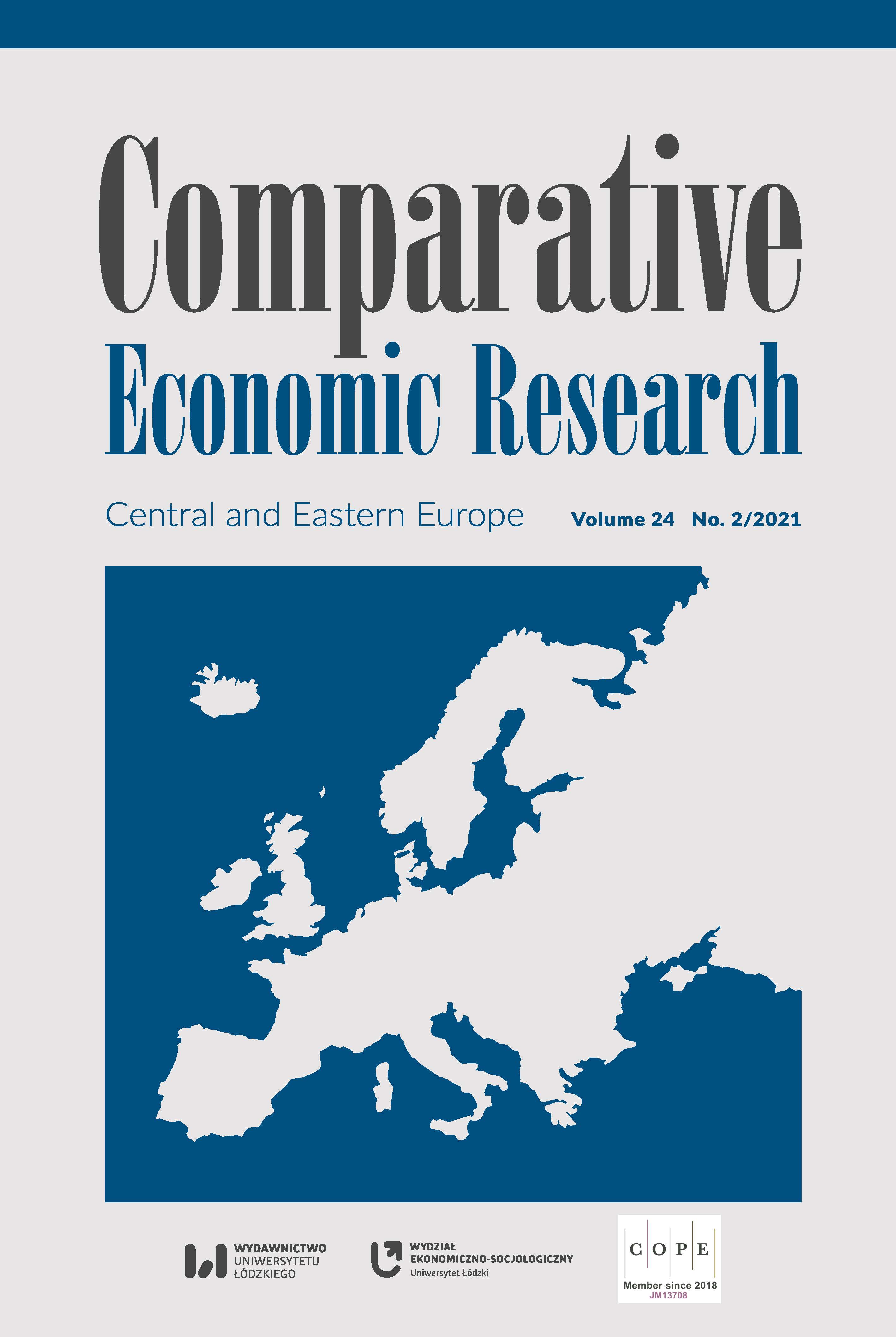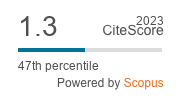A Pre Post-COVID–19 Pandemic Review of Regional Connectivity and Socio-Economic Development Reforms: What Can Be Learned by Central and Eastern European Countries from the China-Pakistan Economic Corridor
DOI:
https://doi.org/10.18778/1508-2008.24.10Keywords:
China–Pakistan Economic Corridor (CPEC), exchange rate, FDI, violence, technology, socio‑economic development, COVID–19 pandemicAbstract
This paper aims to highlight the role of mutual assistance of China and Pakistan’s regional connectivity through the China‑Pakistan Economic Corridor (CPEC) and show what lessons can be learned by Central and Eastern European Countries (CEECs). CPEC promotes trade, FDI, peace, and sustainable socio‑economic development, and it can help to alleviate the effects of COVID–19 in the region to promote socio‑economic development. In this study, we employed the Rolling Window Approach (Rolling Moving Average Approach) for data analysis of pre‑ and post‑COVID–19. It also focuses on before and after the CPEC initiative’s impact on the Pakistani economy through the Rolling Window Approach and graphical trends. In Pakistan, thanks to CPEC; trade, FDI, remittance, and the stock exchange (PSX) showed an upward shift. Terrorism decreased, which indicates a positive sign for peace and socio‑economic development. However, currency depreciation increased, and the exchange rate trend is going up against the dollar, hurting the economy badly in several ways, such as the balance of payment, current account deficit, and lower some exports. To mitigate these issues, Pakistan and China have taken steps as trade formulated in domestic currency between China and Pakistan. During COVID–19, the provision of health care equipment on a priority basis from China helped to combat the COVID–19 effects and stabilize Pakistan’s Economy. CPEC is structured to connect regional economic zones by forming local, regional, and global value chains. To cope with the COVID–19 impacts, socio‑economic reforms and regional cooperation are suggested for CEECs with a pre‑post circumstances review. Regional integration and cooperation are key to coping with this pandemic. CEECs can learn lessons from CPEC for socio‑economic development, reducing violence, and improving the economy.
Downloads
References
Abid, M., Ashfaq, A. (2015), CPEC: Challenges and opportunities for Pakistan, “Journal of Pakistan Vision”, 16 (2), pp. 142–169, http://pu.edu.pk/images/journal/studies/PDF-FILES/Artical-7_v16_2_2015.pdf (accessed: 15.12.2019).
Google Scholar
Acemoglu, D., Robinson, J. (2013), Why nations fail: the origins of power, prosperity and poverty, Profile Books, London. https://doi.org/10.1111/dpr.12048
Google Scholar
DOI: https://doi.org/10.1355/ae29-2j
Aftab, M.A. (2018), China Pakistan Economic Corridor; Prospects and Challenges for Baluchistan, Pakistan, IOP Conference Series: Materials Science and Engineering, 414, IOP Publishing, https://www.researchgate.net/publication/327638000_China-Pakistan_Economic_Corridor_Prospects_and_Challenges_for_Balochistan_Pakistan (accessed: 15.12.2019).
Google Scholar
DOI: https://doi.org/10.1088/1757-899X/414/1/012046
Ahmad, Z., Abdullah, N.M.H., Roslan, S. (2012), Capital structure effect on firms performance: Focusing on consumers and industrials sectors on Malaysian firms, “International Review of Business Research Papers”, 8 (5), pp. 137–155, https://citeseerx.ist.psu.edu/viewdoc/download?doi=10.1.1.458.8815&rep=rep1&type=pdf (accessed: 15.12.2019).
Google Scholar
Ali, R., Afzal, M. (2012), Impact of the global financial crisis on stock markets: Evidence from Pakistan and India, “E3 Journal of Business Management and Economics”, 3 (7), pp. 275–282, https://www.e3journals.org/cms/articles/1342846725_Afzal.pdf (accessed: 15.12.2019).
Google Scholar
Ashraf, B.N., Arshad, S., Yuancheng, H. (2016), Capital regulation and bank risk‑taking behavior: Evidence from Pakistan, “International Journal of Financial Studies”, 4 (3), pp. 1–20, https://doi.org/10.3390/ijfs4030016
Google Scholar
DOI: https://doi.org/10.3390/ijfs4030016
Butt, K.M., Butt, A.A. (2015), Impact of CPEC on Regional and Extra‑Regional Actors, “Journal of Political Science”, XXXIII, pp. 23–44, http://ps.gcu.edu.pk/wp-content/uploads/2015/02/Butt-Butt.pdf (accessed: 15.12.2019).
Google Scholar
Dasgupta, S. (2016), First financing by China‑backed AIIB goes to the Silk Road plan in Pakistan, “Times of India”, May 2, http://timesofindia.indiatimes.com/world/china/First-financing-byChina-backed-AIIB-goes-to-Silk-Road-plan-inPakistan/articleshow/52082622.cms (accessed: 2.05.2015).
Google Scholar
Fouzia, H.A., Aban, A.Q. (2018), Exploring the Awareness of China Pakistan Economic Corridor: A Stakeholders Perspective, “A Research Journal of South Asian Studies”, 33 (1), pp. 97–116, https://www.researchgate.net/publication/325846861_Exploring_the_Awareness_of_China_Pakistan_Economic_Corridor_A_Stakeholder’s_Perspective (accessed: 15.12.2019).
Google Scholar
Hussain, M., Mehmood, S., Saeed N. (2017), SWOT analysis of the China – Pakistan economic corridor (CPEC), “Quarterly Journal of Chinese Studies”, 5 (2), pp. 42–64, https://www.researchgate.net/profile/Sumara-Mehmood/publication/321713863_SWOT_Analysis_of_the_China-_Pakistan_Economic_Corridor_CPEC/links/5a321932458515afb613d60f/SWOT-Analysis-of-the-China-Pakistan-Economic-Corridor-CPEC.pdf (accessed: 15.12.2019).
Google Scholar
Law, S., Tan, H.B., Azman-Saini, W.N.W. (2015), Globalization, Institutional Reforms, and Financial Development in East Asian Economies, “The World Economy”, 38 (2), pp. 379–398, https://doi.org/10.1111/twec.12168
Google Scholar
DOI: https://doi.org/10.1111/twec.12168
Lee, P.T.W., Hu, Z.H., Lee, S.J., Choi, K.S., Shin, S.H. (2017), Research trends and agenda on the Belt and Road (B&R) initiative with a focus on maritime transport, “Maritime Policy & Management”, 45 (3), pp. 282–300, https://doi.org/10.1080/03088839.2017.1400189
Google Scholar
DOI: https://doi.org/10.1080/03088839.2017.1400189
Liu, X., An, H., Wang, L., Jia, X., (2017), An integrated approach to optimizing moving average rules in the EUA futures market based on particle swarm optimization and genetic algorithms, “Applied Energy”, 185 (2), pp. 1778–1787, https://doi.org/10.1016/j.apenergy.2016.01.045
Google Scholar
DOI: https://doi.org/10.1016/j.apenergy.2016.01.045
Merton, R.C., Bodie, Z. (1995), A Conceptual Framework for Analyzing the Financial System, Harvard Business School Press, Boston.
Google Scholar
Pakistan Economic Survey (2017–2018), http://www.finance.gov.pk/survey_1718.html (accessed: 26.04.2018).
Google Scholar
Patro, D.K., Wald, J.K., Wu, Y. (2014), Currency devaluation and stock market response: An empirical analysis, “Journal of International Money and Finance”, 40, pp. 79–94, https://www.researchgate.net/publication/256002940_Currency_Devaluation_and_Stock_Market_Response_An_Empirical_Analysis (accessed: 15.12.2019).
Google Scholar
DOI: https://doi.org/10.1016/j.jimonfin.2013.09.005
Piazza, J.A. (2006), Rooted in poverty? Terrorism, poor economic development, and social cleavages, “Terrorism and Political Violence”, 18 (1), pp. 159–177, https://doi.org/10.1080/095465590944578
Google Scholar
DOI: https://doi.org/10.1080/095465590944578
PIDE COVID–19 E‑book (2020), https://www.pide.org.pk/pdf/PIDE-COVID19-EBook.pdf (accessed: 21.03.2021).
Google Scholar
Rahman, S., Rahman, M., Gilmour, S., Swe, K.T., Abe, S.K., Shibuya, K. (2018), Articles Trends in, and projections of, indicators of universal health coverage in Bangladesh, 1995–2030: a Bayesian analysis of population‑based household data, “The Lancet Global Health”, 6 (1), e84–e94, https://doi.org/10.1016/S2214-109X(17)30413-8
Google Scholar
DOI: https://doi.org/10.1016/S2214-109X(17)30413-8
Rehman, R.U., Zhang, J., Ali, R. (2014), Firm Performance, and Emerging Economies, “Journal of Applied Business Researc”, 30 (3), pp. 701–714, https://doi.org/10.19030/jabr.v30i3.8554
Google Scholar
DOI: https://doi.org/10.19030/jabr.v30i3.8554
South Asia Portal (Dezember 2019), https://www.satp.org/datasheet-terrorist-attack/official-data/pakistan (accessed: 29.01.2020).
Google Scholar
South Asia Terrorism Portal, http://www.satp.org (accessed: 15.12.2019).
Google Scholar
State Bank of Pakistan (2017), https://www.sbp.org.pk/reports/annual/arFY17/Anul-index-eng-17.htm (accessed: 31.10.2017).
Google Scholar
State Bank of Pakistan (2019), https://www.sbp.org.pk/Ecodata/Foreign_Dir.pdf (accessed: 2.12.2019).
Google Scholar
Tambo, E., Khayeka‑Wandabwa, C., Wagithi, G., Liu, Y., Tang, S., Zhou, X. (2019), China’s Belt and Road Initiative: Incorporating public health measures toward global economic growth and shared prosperity, “Global Health Journal”, 3 (2), pp. 46–49, https://doi.org/10.1016/j.glohj.2019.06.003
Google Scholar
DOI: https://doi.org/10.1016/j.glohj.2019.06.003
Yahoo Finance (2019), https://finance.yahoo.com/quote/WIPAK.FGI/ (accessed: 28.02.2019).
Google Scholar
Downloads
Published
How to Cite
Issue
Section
License

This work is licensed under a Creative Commons Attribution-NonCommercial-NoDerivatives 4.0 International License.











